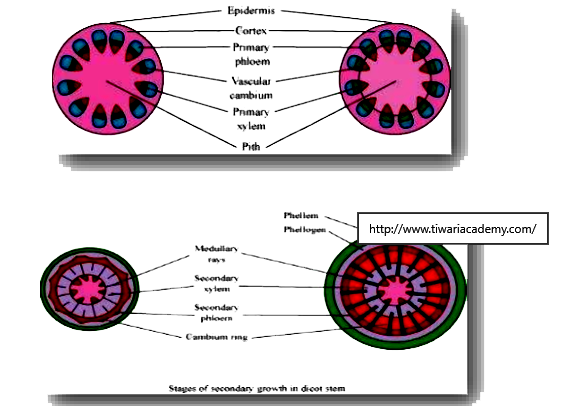Explain the process of secondary growth in stems of woody angiosperm with help of schematic diagrams. What is the significance?
Video Solution
Text Solution
In woody dicots, the strip of cambium present between the primary xylem and phloem is called the interfascicular cambium. The interfascicular cambium is formed from the cells of the medullary rays adjoining the interfascicular cambium. This results in the formation of a continuous cambium ring. The cambium cuts off new cells toward its either sides. The cells present toward the outside differentiate into the secondary phloem, while the cells cut off toward the pith give rise to the secondary xylem. The amount of the secondary xylem produced is more than that of the secondary phloem.

The secondary growth in plants increases the girth of plants, increases the amount of water and nutrients to support the growing number of leaves, and also provides support to plants.
|
Topper's Solved these Questions
Similar Questions
Knowledge Check
Monocot stems show secondary growth
ADracaenaBmaizeCgrassDbambooA moncot stem with secondary growth is
ALiliumBCocosCYuccaDAsparagusAn example of monocots showing secondary growth in stem is
ALiliumBPeaCAsparagusDYucca
Secondary Growth of Dicot stem
View SolutionDescribe the process of fertilization in angiosperms with the help of diagram.
View SolutionExplain in detail the process of messenger RNA synthesis from DNA template with the help of a diagram ?
View SolutionExplain the process of reproduction in Plasmodium with the help of a diagram.
View Solutionstele in angiosperms, secondary growth in dicot root
View Solution
